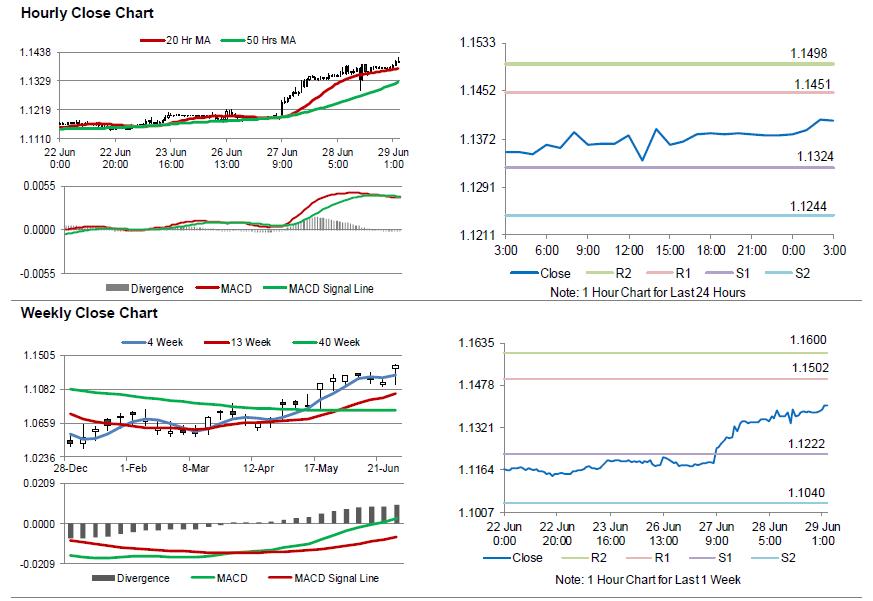For the 24 hours to 23:00 GMT, the EUR rose 0.33% against the USD and closed at 1.1378.
On the economic front, Italy’s flash consumer price index (CPI) unexpectedly dropped 0.1% on a monthly basis in June, defying market consensus for a gain of 0.1%. In the preceding month, the CPI had declined 0.2%.
Macroeconomic data showed that advance goods trade deficit in the US narrowed slightly more-than-expected to a level of $65.9 billion in May, following a revised deficit of $67.1 billion in the previous month, while markets anticipated the nation to record a deficit of $66.0 billion. Further, the nation’s seasonally adjusted flash wholesale inventories rebounded more-than-expected by 0.3% in May, compared to a revised fall of 0.4% in the previous month.
On the contrary, pending home sales in the US unexpectedly declined 0.8% on a monthly basis in May, falling for the third consecutive month and confounding market expectations for a rise of 1.0%. Pending home sales had fallen by a revised 1.7% in the previous month. Also, the nation’s MBA mortgage applications dropped by the most in six months, as it eased 6.2% in the week ended 23 June, following a rise of 0.6% in the previous week.
In the Asian session, at GMT0300, the pair is trading at 1.1403, with the EUR trading 0.22% higher against the USD from yesterday’s close.
The pair is expected to find support at 1.1324, and a fall through could take it to the next support level of 1.1244. The pair is expected to find its first resistance at 1.1451, and a rise through could take it to the next resistance level of 1.1498.
Trading trend in the Euro today is expected to be determined by Germany’s flash inflation figures and the final Euro-zone’s consumer confidence, both for June, slated to release in a few hours. Moreover, the US annualised 1Q GDP and initial jobless claims data, will pique investor attention.
The currency pair is trading above its 20 Hr and 50 Hr moving averages.

